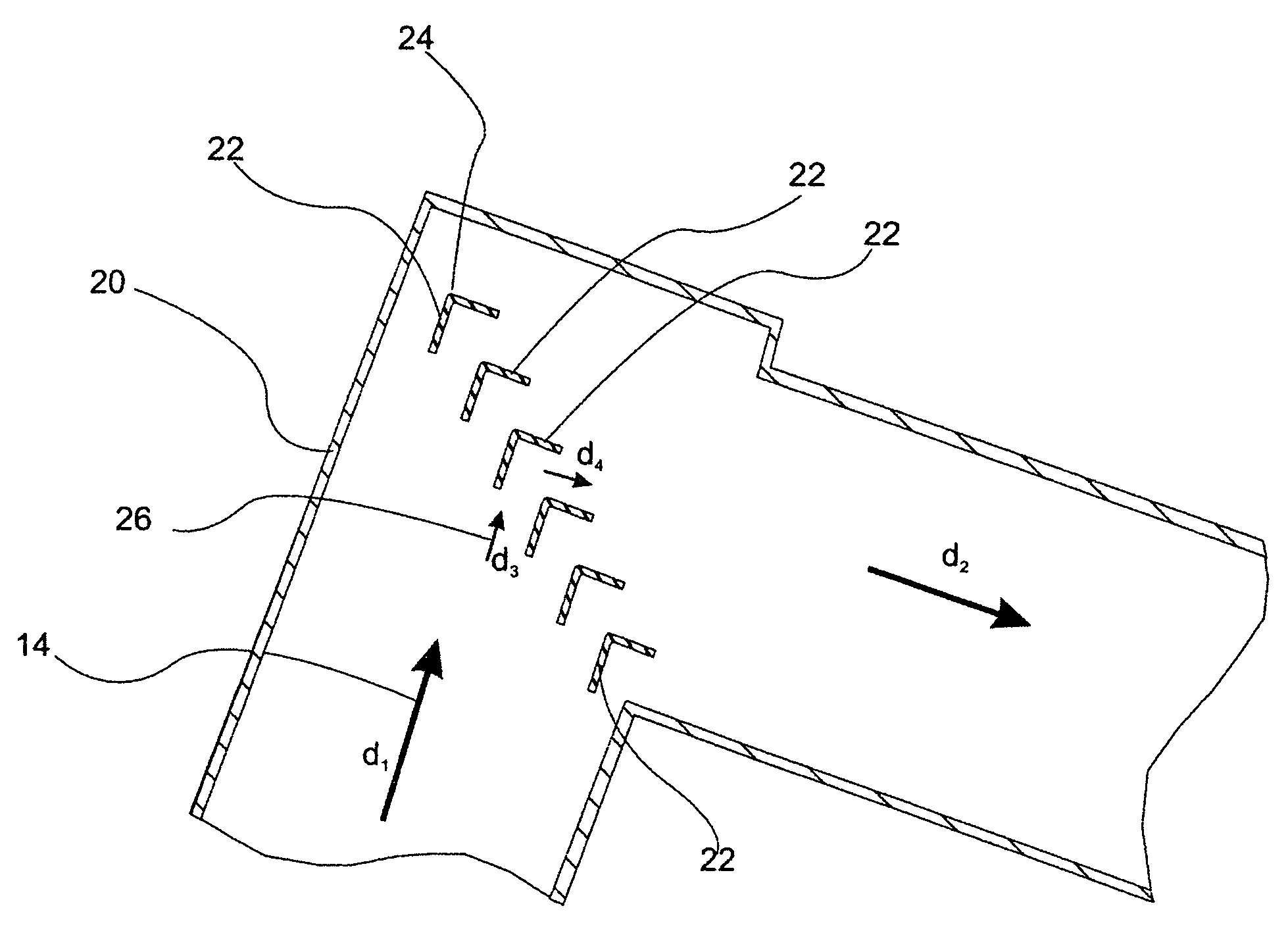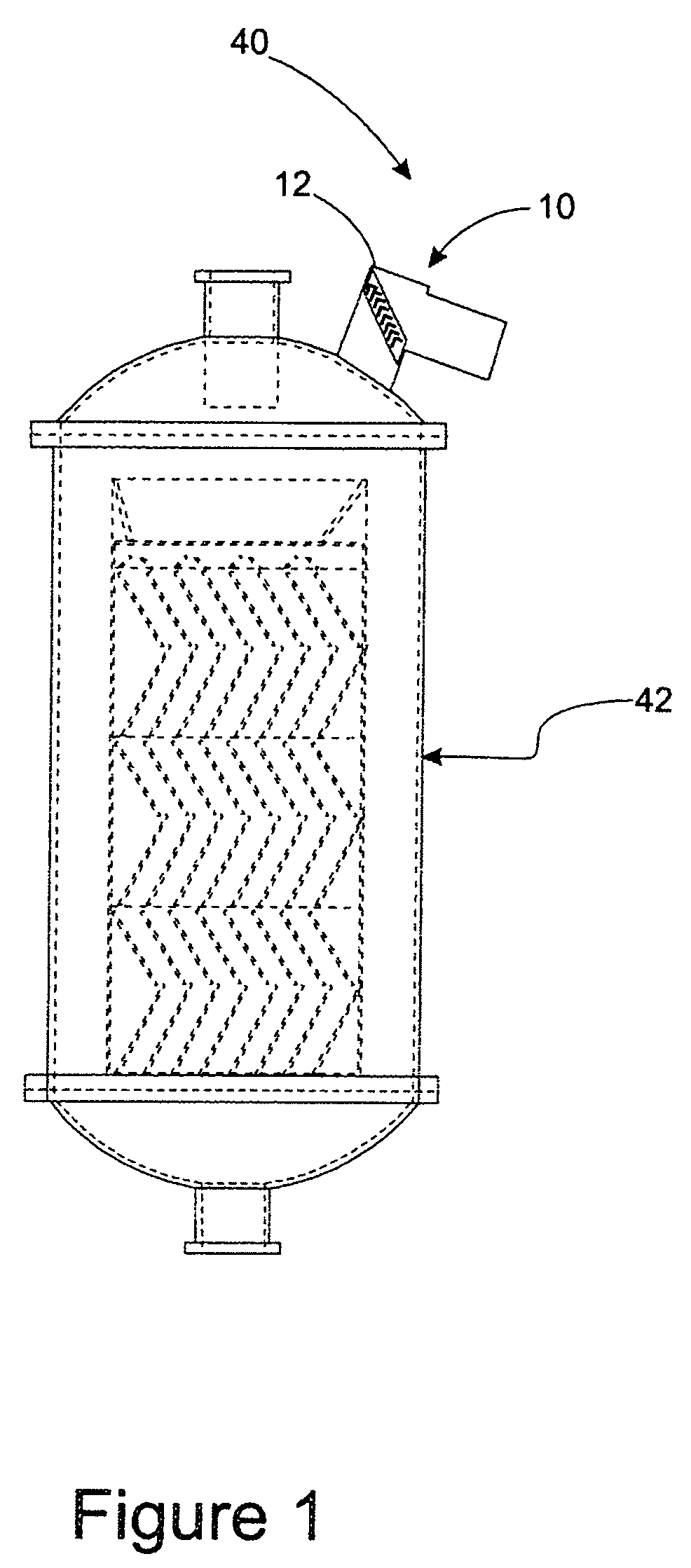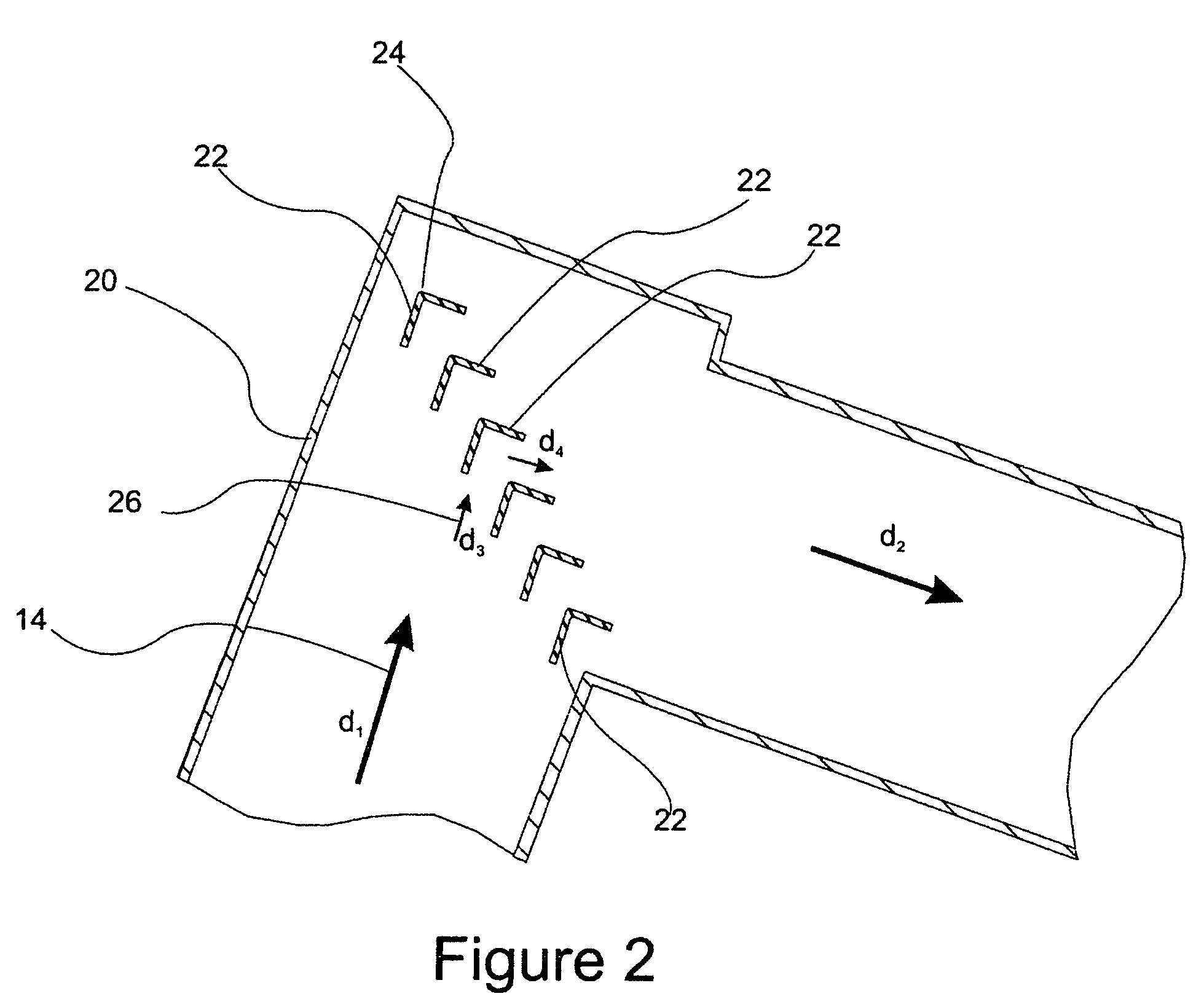Gas-liquid separator utilizing turning vanes to capture liquid droplets as well as redirect the gas flow around a bend
a gas-liquid separator and vanes technology, applied in the direction of separation process, liquid degasification, filtration separation, etc., can solve the problems of high energy consumption, severe pressure drop, and loss of valuable reactants of liquid droplets
- Summary
- Abstract
- Description
- Claims
- Application Information
AI Technical Summary
Benefits of technology
Problems solved by technology
Method used
Image
Examples
Embodiment Construction
)
[0032]Reference will now be made in detail to presently preferred compositions or embodiments and methods of the invention, which constitute the best modes of practicing the invention presently known to the inventors.
[0033]With reference to FIGS. 1, 2, 3A, and 3B, schematic illustrations of an embodiment of the gas-liquid separation enhancer of the present invention are provided. FIG. 1 is a schematic illustration of a reactor with a gas takeoff incorporating the gas-liquid separation enhancer of the invention. FIG. 2 is a cross-sectional view of a conduit section incorporating the gas-liquid separation enhancer. FIG. 3A is a cross-sectional view of a turning vane used in an embodiment of the gas-liquid separation enhancer of the invention. FIG. 3B is a perspective view of a turning vane used in an embodiment of the gas-liquid separation enhancer of the invention. The gas-liquid separation enhancer of the present embodiment is advantageously used to separate a liquid from a flowing...
PUM
| Property | Measurement | Unit |
|---|---|---|
| diameter | aaaaa | aaaaa |
| radius of curvature | aaaaa | aaaaa |
| angle | aaaaa | aaaaa |
Abstract
Description
Claims
Application Information
 Login to View More
Login to View More - R&D
- Intellectual Property
- Life Sciences
- Materials
- Tech Scout
- Unparalleled Data Quality
- Higher Quality Content
- 60% Fewer Hallucinations
Browse by: Latest US Patents, China's latest patents, Technical Efficacy Thesaurus, Application Domain, Technology Topic, Popular Technical Reports.
© 2025 PatSnap. All rights reserved.Legal|Privacy policy|Modern Slavery Act Transparency Statement|Sitemap|About US| Contact US: help@patsnap.com



